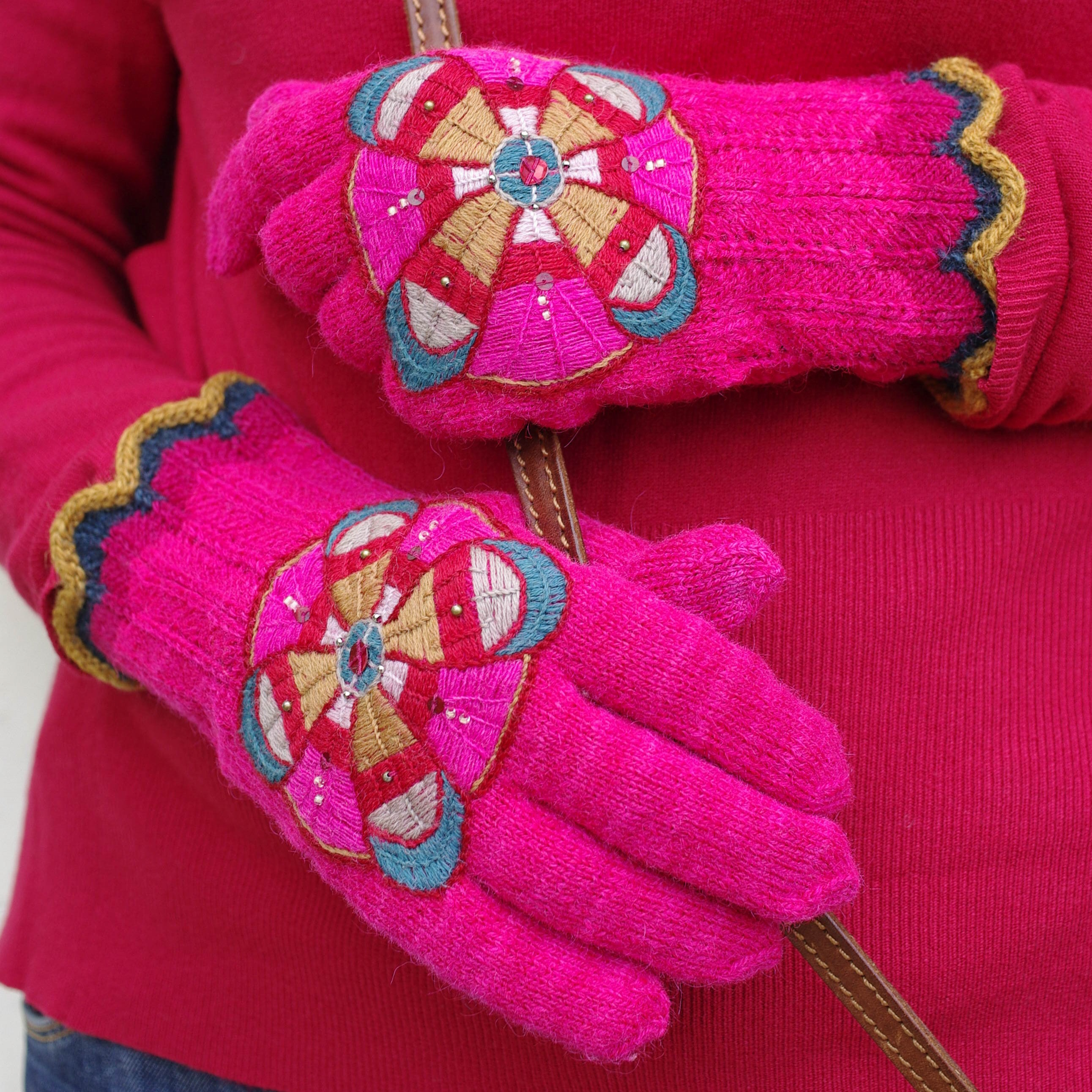Innovation in Estonian heritage-based knitting
The case of embroidered gloves
DOI:
https://doi.org/10.7577/formakademisk.5425Emneord (Nøkkelord):
EnglishSammendrag
Innovation is an intentionally introduced significant and positive change to an existent practice. In crafts, innovation is challenging because, by nature, crafts are based on traditions and collective knowledge; they involve practising something the way it has always been practiced. If anything changes, it is copied rapidly by other craftspeople. In this article, I explain innovation in traditional glove-knitting through the concept of transformation of the tradition, and I analyse the case using a method called technique-concept-utility-structure-material (TCUSM), which was introduced by Adhi Nugraha in 2010. According to this method, one must know the tradition thoroughly in order to make conscious and justifiable changes to it. One must compare and explain what is traditional and what is new in one’s products. I combine this method with an artistic autoethnographic approach. Within my personal practice, the most significant change to the original involves combining and borrowing aesthetic elements from other traditional textiles or developing my own combinations of patterns and colours. First, I give a short overview of the history of embroidered gloves in Estonia, then demonstrate, with the help of explanations and photographs, contemporary gloves, made by me.
Referanser
Bartleet, B.-L. (2021). Artistic Autoethnography. In T. E. Adams, S. H. Jones, C. Ellis (Eds.), Handbook of Autoethnography (2nd ed., pp. 132–145). Routledge. https://doi.org/10.4324/9780429431760 https://doi.org/10.4324/9780429431760-14
Eesti Entsüklopeedia (2023, June 6). Rahvuskoosseis Eestis [National team in Estonia]. http://entsyklopeedia.ee/artikkel/rahvuskoosseis_eestis
Eesti Statistikaamet (2023, June 6). Innovation. https://www.stat.ee/en/find-statistics/statistics-theme/technology-innovation-and-rd/innovation
Ehn, B. (2011). DOING-IT-YOURSELF. Autoethnography of Manual Work. Ethnologia Europaea, 41(1), pp. 52–63. https://doi.org/10.16995/ee.1077 https://doi.org/10.16995/ee.1077
Fosness, H. (2009). Håndplagg til bunader og folkedrakter (2nd ed.). Cappelen Damm.
Honko, L. (1998). Folklooriprotsess [Folklore process]. Mäetagused, (6), 56–84. https://doi.org/10.7592/MT1998.06.honko https://doi.org/10.7592/MT1998.06.honko
Juliani, A. J. (2017). Intentional Innovation. How to Guide Risk-Taking, Build Creative Capacity, and Lead Change. Eye On Education. https://doi.org/10.4324/9781315637266 https://doi.org/10.4324/9781315637266
Jõeste, K., Ehin, K. (2012). Ornamented journey. Saara Publishing House.
Jõeste, K. (2022). Estonian knitting 3. Mittens. Saara Publishing House.
Jõeste, K., & Sarv Õ. (2023). Kindad. In M. Tamjärv. Seto rahvarõivad (pp. 419–433). Seto Käsitüü Kogo MTÜ.
Kabur, A., Pink, A., Meriste, M. (2011). Designs and patterns from Muhu island: a needlework tradition from Estonia. Saara Publishing House.
Kahn, B. K. (2018). Understanding innovation. Business Horizons, 61(3), pp. 453–460. https://doi.org/10.1016/j.bushor.2018.01.011 https://doi.org/10.1016/j.bushor.2018.01.011
Nugraha, A. (2010). Transforming tradition for sustainability through ’TCUSM’. Research in Arts and Education, 3, 20–36. https://doi.org/10.54916/rae.118730 https://doi.org/10.54916/rae.118730
Pink, A., Reimann, S., Jõeste, K. (2016). Estonian knitting 1. Customs and techniques. Saara Publishing House.
Pink, A. (2018). Estonian knitting 2. Socks and stockings. Saara Publishing House.
Viires, A. (2008). Ajalugu ja rahvakultuur. In A. Viires, & E. Vunder (Eds.), Eesti rahvakultuur [Estonian folk culture] (2nd ed., pp 40–50). Eesti Entsüklopeediakirjastus.
Väänänen, N., Pöllänen, S. (2020). Conceptualizing Sustainable Craft: Concept Analysis of Literature. The Design Journal, 23(2), 263–285. https://doi.org/10.1080/14606925.2020.1718276 https://doi.org/10.1080/14606925.2020.1718276

Nedlastinger
Publisert
Hvordan referere
Utgave
Seksjon
Lisens
Opphavsrett 2023 Kristi Jõeste

Dette verket er lisensiert under Creative Commons Attribution-NoDerivatives 4.0 International License.
- Forfatteren(e) beholder sin opphavs- og kopieringsrett til eget manuskript, men gir tidsskriftet varig rett til 1) å fremføre manuskriptet for offentligheten i den opprinnelig publiserte digitale form, og 2) å registreres og siteres som første publisering av manuskriptet.
- Forfatteren må selv forvalte sine økonomiske kopieringsrettigheter overfor eventuell tredjepart.
- Tidsskriftet gir ingen økonomisk eller annen kompensasjon for innsendte bidrag, medmindre det er gjort særskilt avtale om dette med forfatteren(e).
- Tidsskriftet plikter å arkivere manuskriptet (inklusive metadata) i den opprinnelig publiserte digitale form, i minst ett dertil egnet åpent tilgjengelig langtidsarkiv for digitalt materiell, som for eksempel i de norske universitetenes institusjonsarkiv innen rammen av NORA-samarbeidet.
Verket vil bli publisert OpenAccess med en Creative Commons 4.0-lisens som tillater alle å lese, dele og tilpasse innholdet, også kommersielt, under lisensvilkårene:
Dette verket må tilskrives/ krediteres på riktig måte, en lenke må gis til CC-BY 4.0-lisensen, og endringer som er gjort må angis på en rimelig måte, men ikke på noen måte som antyder at lisensgiveren støtter deg eller din bruk.



